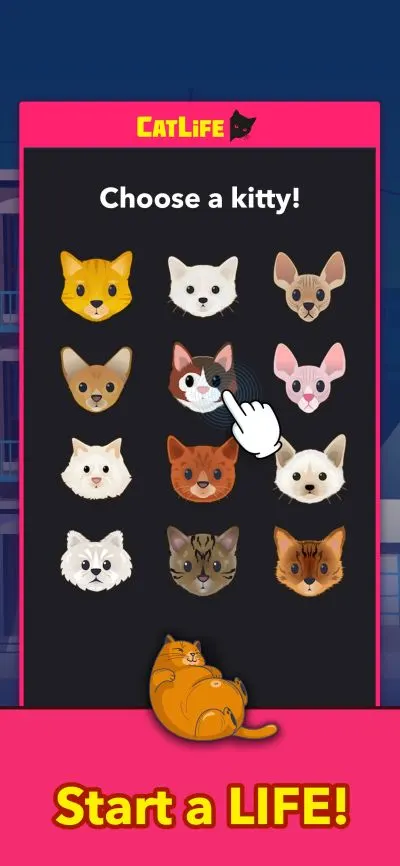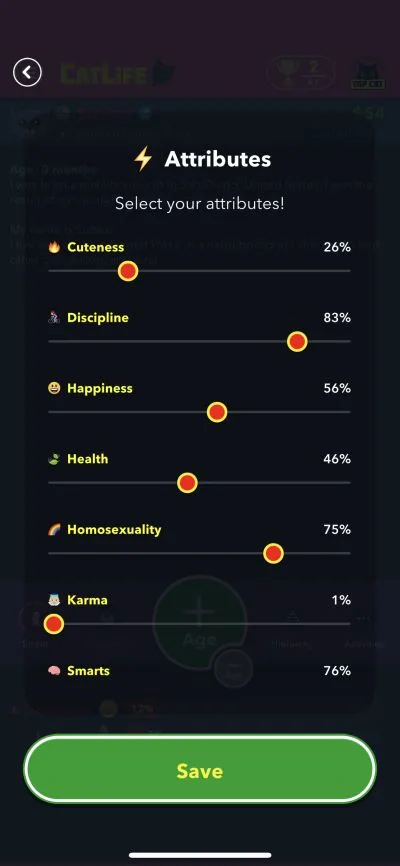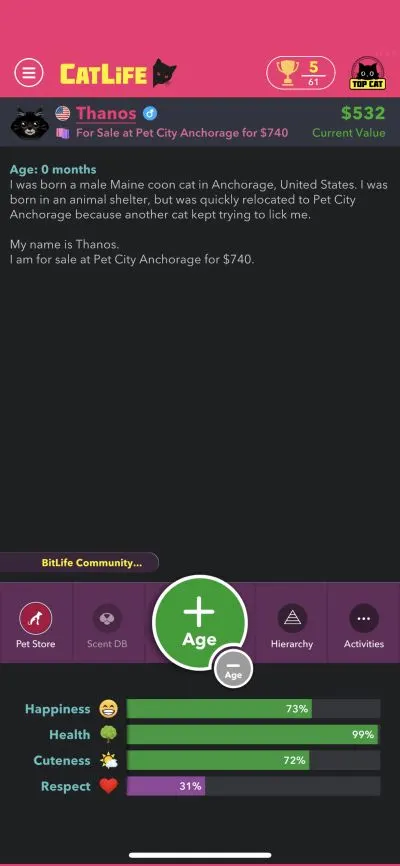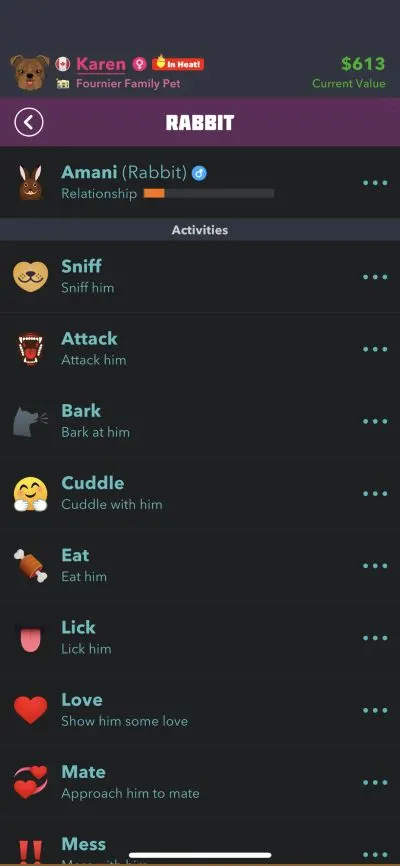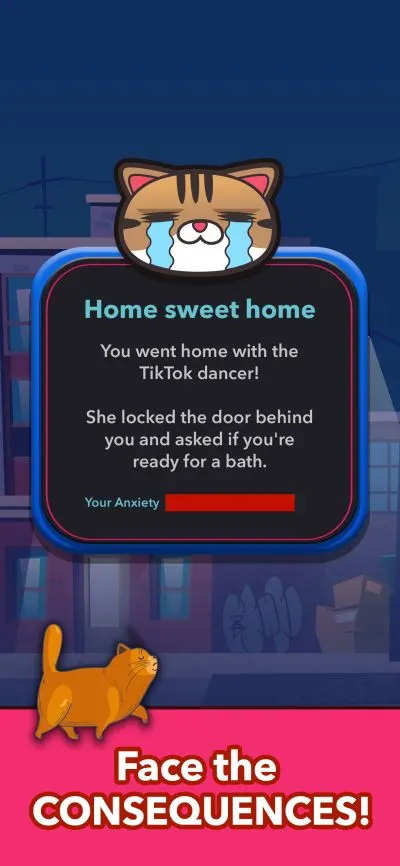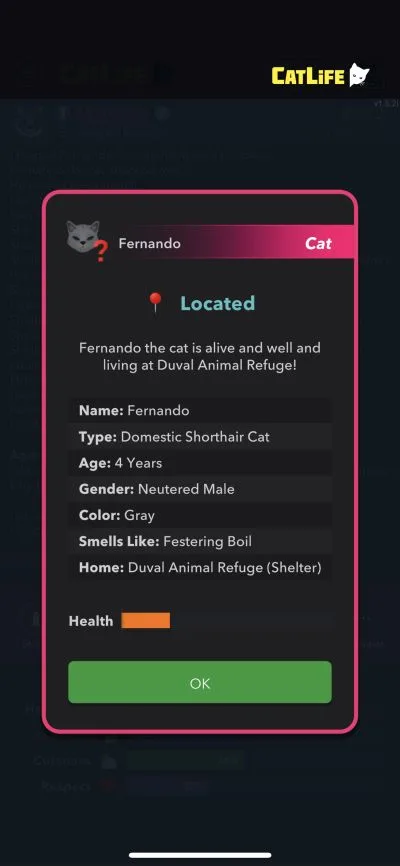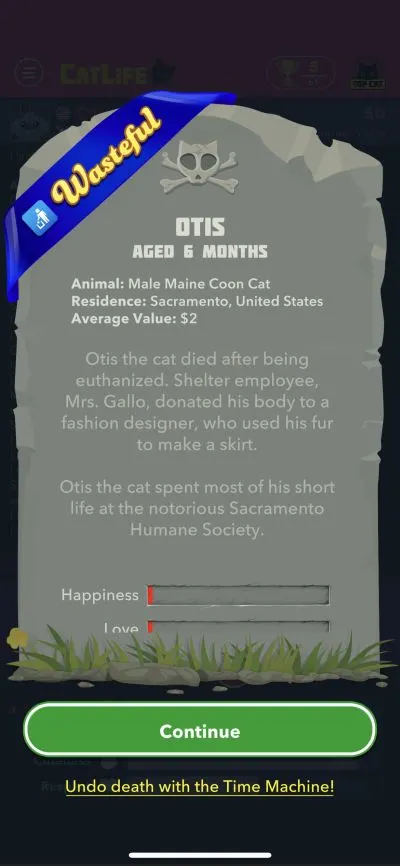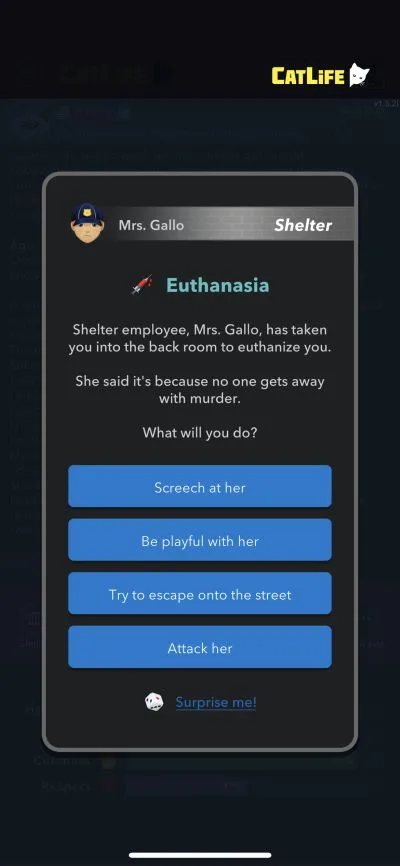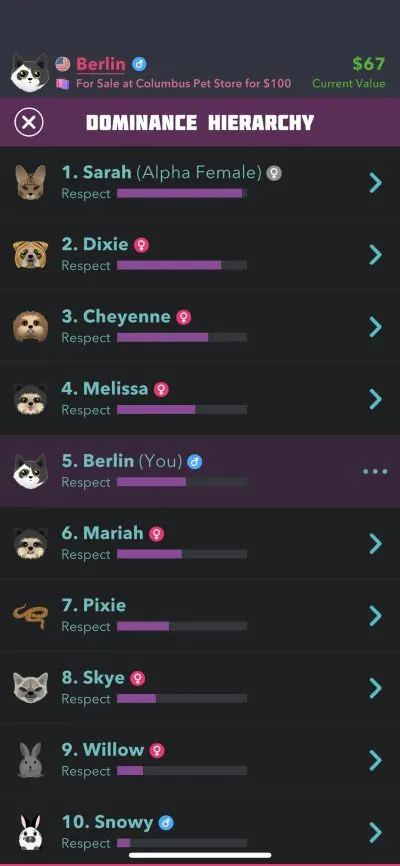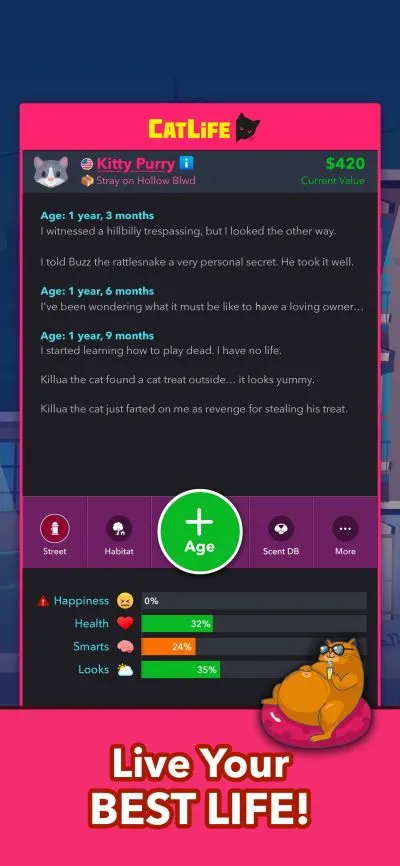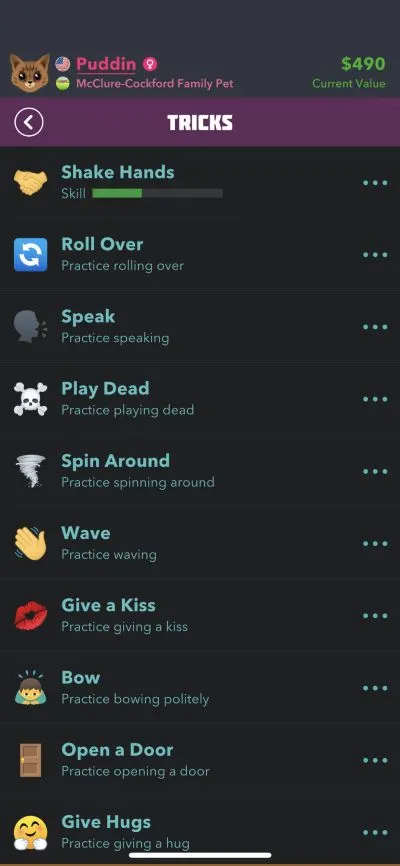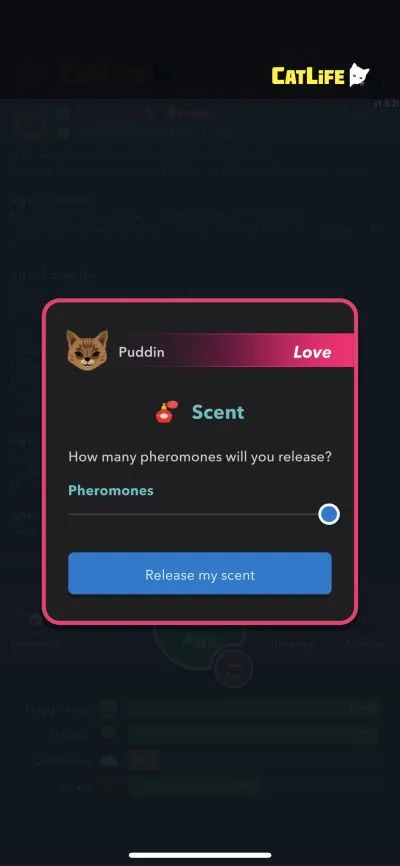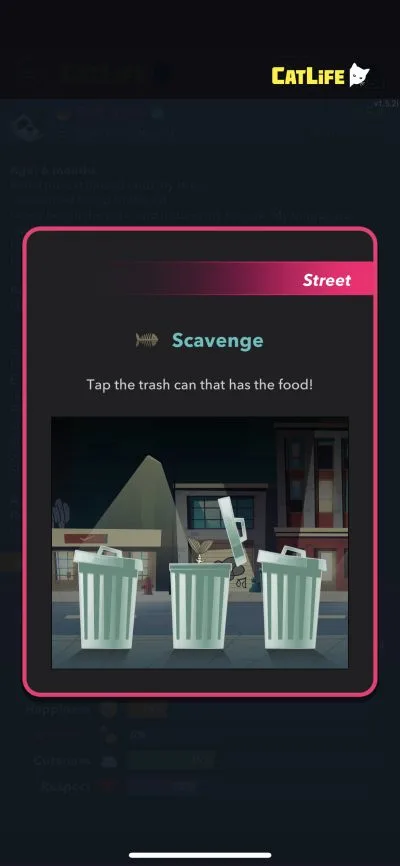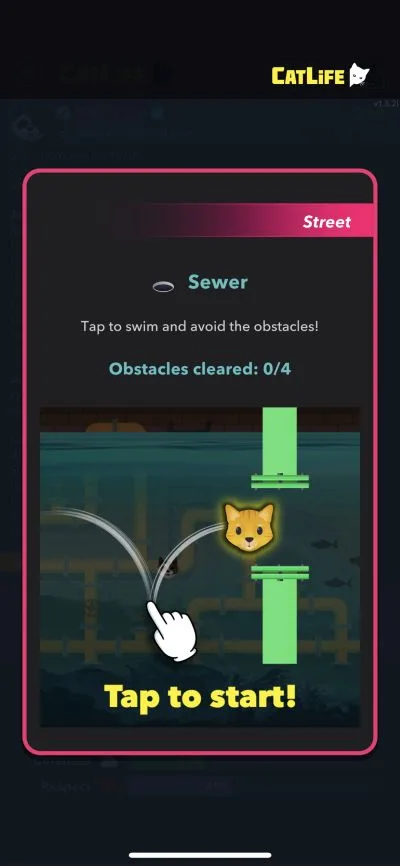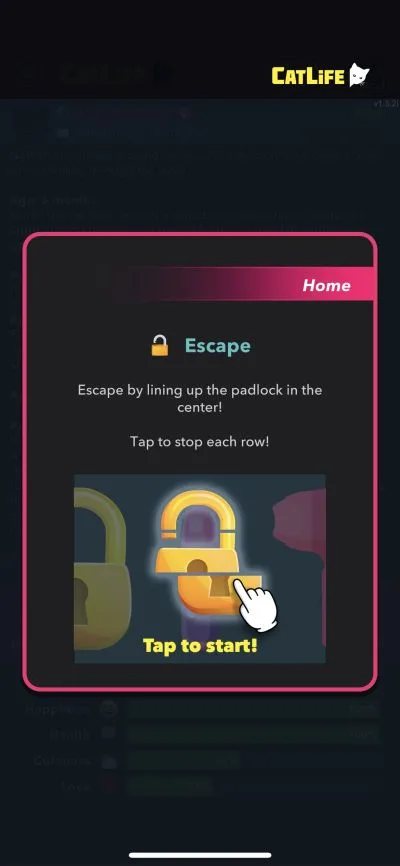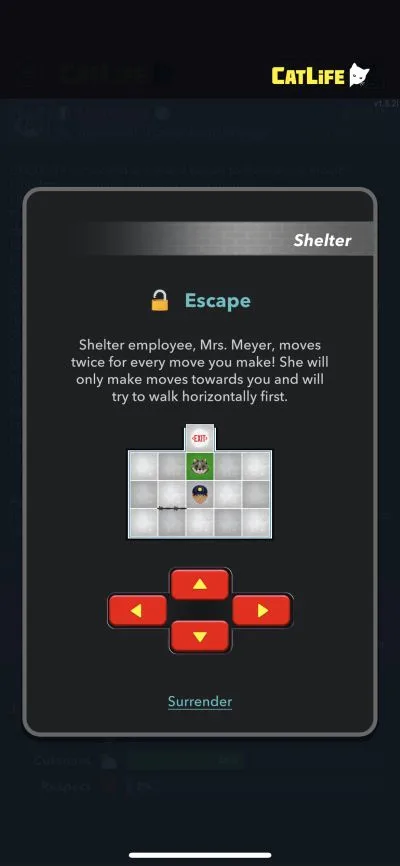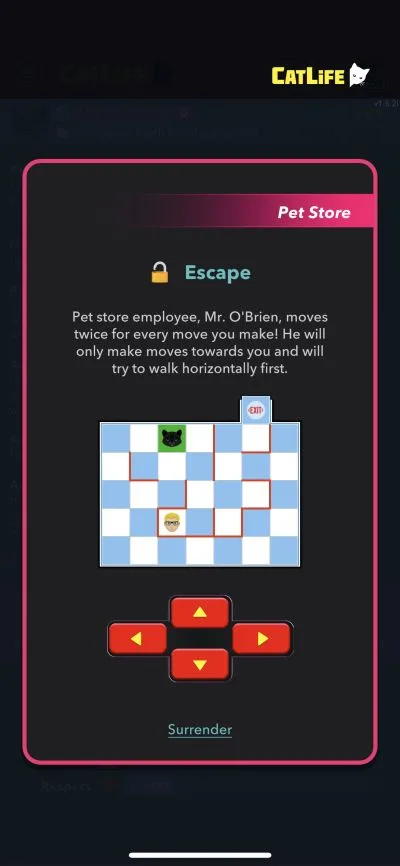After the success of BitLife and the expected popularity of DogLife, Candywriter released a third life simulator game just a few weeks ago, and the game is known as CatLife. While BitLife focused on human characters and DogLife was created for those who want to play as a canine character, CatLife is, as the title suggests, meant for those who would rather play as a cat, though much like DogLife, you can play as a cat or a dog, depending on your preferences. Yes, it sounds pretty similar to its immediate predecessor, but we shall be diving deeper into that as we start this guide and walk you through the basics of the game and then some.
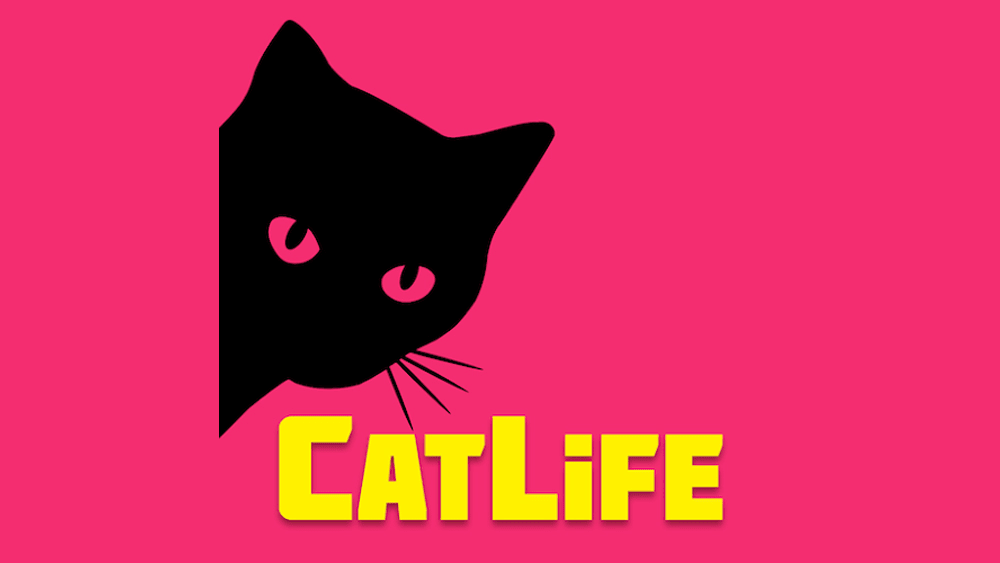
CatLife is, just like its two predecessors, quite a deep and full-featured game, and that means it won’t be easy to learn overnight — the basics are easy enough, but there are countless mechanics, features, and various nuances that make for a game that has a whole lot of replay value. So with that being said, here are 13 tips and tricks that make up this CatLife beginner’s guide, covering just about every gameplay-related area, as well as the differences that set this new game apart from its two predecessors, especially DogLife.
1. CatLife Is Very Similar To DogLife
If you guessed that CatLife is pretty much the same animal (no pun intended) as DogLife, then you are mostly right. With the exception of a few differences that we will be explaining later on in this guide, CatLife is mostly a re-skinned version of DogLife, and you can also play as a dog if living your best (or worst) feline life doesn’t appeal to you — of course, the priority here would be the cat breeds over the dog breeds, but otherwise, the experience is very similar.
Just as usual, you can create a new life and choose your character’s name and gender, and choose whether you wish to start out life in a household, on the street, at a shelter, or at a pet store. Like you can in BitLife and DogLife, you can choose your character’s home country and hometown, and when it comes to choosing breeds, the difference here is that cat breeds all appear above the dog breeds, as we noted above. If you are willing to pay $5 for Top Cat — this game’s version of Top Dog in DogLife and God Mode in BitLife — you can choose your character’s appearance (primary color, secondary color, eye color) or their attributes.
The similarities between DogLife and CatLife are especially evident when you choose a habitat for your character. If you choose to live in a household, you will be assigned a random family, couple, or individual to take care of you, and while you can edit human and animal NPCs alike if you choose to purchase the Top Cat feature, your relationship with these humans will be randomized. The same applies to any other pets that you may have — if they have other pets, you will be ranked among all pets in the Hierarchy section, and depending on how the game rolls these characters, you may or may not be on good terms with your fellow pets. Still, this is the option that offers the most stability in general, provided you end up with loving owners.
Choosing a pet shop or a shelter, on the other hand, will also have you dealing with humans with randomized attributes and relationship statuses with you — these would be the pet store or shelter’s owners and staff members. The hierarchy setup will apply more here than it does if you were in a household, as you’ll need to gain some respect among your fellow animals while also doing what you could to convince humans to buy you or adopt you — this could mean performing trips or doing cute things to attract attention.
And lastly, opting for the streets is almost exclusively about respect and survival — be prepared for some nasty animals, even the smaller ones, who may randomly attack you and inflict tons of damage (yes, even the smaller ones) to exert their dominance, and be prepared as well to scrounge for food and play a number of mini-games, either to scrounge for food or find a new place to roam.
Just like in DogLife, you have the option to unlock all breeds — unlocking all cat and dog breeds will cost you $3 respectively, which is a bit costlier than it was in DogLife upon its launch. But if you’re willing to spend some money on the game, we would recommend unlocking Top Cat, which, as mentioned above, costs $5. Not only do you get all cat and dog breeds, you also get the God Mode-like ability to edit all NPC humans and animals, as well as choose your attributes and appearance when creating a character.
Granted, you won’t be able to edit each and every stat, as some may be hidden. You won’t be able to edit the ages, genders, and backgrounds of other characters. However, you’ll be able to edit the main attributes, as well as character names and other important details, which should be enough incentive for most players to spend five dollars on this very useful feature.
Once again, just like in DogLife, hitting the Age button advances your character’s life by three months instead of one year in BitLife. Naturally, this is because cats and dogs age faster and have shorter lifespans than humans, but with that in mind, there will be certain features and actions that will be unlocked once you reach a certain age. For example, you won’t be able to eat much smaller animals (rats, rabbits, etc.) during your first few months, and you won’t be able to perform tricks either at that point in your virtual life.
Having said all that, let’s move on to the different features and mechanics of CatLife, and see how they may be similar or different from the ones you may have already seen while playing DogLife, or even BitLife.
2. Animal Stats – What’s Changed?
This is an aspect of the game that may be best appreciated by those who have Top Cat enabled, but it is important that you are aware of your character’s stats and those of the people and animals they interact with.
When creating a new character, you will (provided you have Top Cat) be able to edit a total of eight stats. Cuteness is the CatLife/DogLife equivalent of Looks, and could influence your value and your attractiveness to potential owners if you choose to live in a Pet Store or Shelter, or even in the Streets. Discipline influences your character’s ability to master new tricks or avoid causing random trouble — say, if you choose to live in a Household, having high Discipline makes it less likely that you’ll chew on the couch, break a vase, or do similar things associated with misbehaving pets.
Happiness is self-explanatory, and so is Health — these show you how contented your character is, and how healthy they are at the moment. Karma affects your resiliency in tough situations (e.g. getting kicked out of the house, getting bullied around by another animal in the shelter, pet shop, or streets) and also plays a role in determining how long you may live.
Smarts is the once again self-explanatory intelligence stats, and Willpower determines how easily or how hard it may be for your character to submit to another animal, avoid the temptation to do bad things, or other potentially bad decisions.
It would seem that Homosexuality has been removed as an editable stat for some (but not all) user characters in CatLife — we’re not sure why, but this attribute can still be tweaked (as can Aggression, Craziness, and Respect, all of which also cannot be edited for your characters) while editing NPC animals. You will, however, notice one new stat that you can edit in God Mode, and that is Strength. (DogLife players will also notice that this has been added to the list of editable stats in Top Dog!)
Strength, as it seems, affects the chances of your character to inflict a ton of damage on humans and other animals alike. It is not to be confused with Aggression, which is a stat we wished would be included among the editable attributes in CatLife/future DogLife updates, but the addition of Strength may be more useful at the end of the day.
After all, you’re the only one who can control how aggressive your character will be, meaning whether you wish to attack an owner for discipling you or flash them puppy-dog eyes to show them that you’re sorry. Aggression, if you come to think about it, is much more useful as a stat for NPCs, which, obviously, you cannot control. But with Strength figured into the mix, this makes it possible to create a character that has a much better chance of getting a number of violence-related ribbons and achievements than others.
Talking about the other stats that can be edited on NPC animals but not on your characters, Craziness determines the chances of them doing things such as planning an escape from a shelter or pet store, Respect is, well, their level of respect in the Dominance Hierarchy, and Homosexuality shows you how likely they are to try to mate with animals of the same sex.
In case you’re wondering the four basic stats for all user characters in CatLife remain the same — Happiness, Health, Cuteness are the three ones that remain in place regardless of where you’re living. For Household, the fourth stat is still Love, the latter being a composite stat based on your relationships with your owners. In all other environments, the fourth stat is still Respect, which is based on your standing in the Dominance Hierarchy and how much (or how little) you are respected by other animals.
3. Understanding The Human Stats
Like the above tip, we mainly suggest checking this out if you have Top Cat enabled, but we still suggest reading through this as you may sometimes see some human attributes visible during certain interactions. What are the stats for CatLife’s human characters, and how do they work?
The editable stats for human NPCs are pretty similar to the ones for characters in BitLife and DogLife — Craziness, Happiness, Health, Kindness, Looks, Sexuality, and Smarts. The main stats you need to be concerned about are Craziness, which determines their likelihood to do unusual things at random (much like their animal equivalents noted above), Happiness, which you can help increase by cuddling with them and showing affection, and Kindness, which plays a huge role in determining how loved or cared for you may be in a household, pet store, or shelter.
You can even include Health as a stat to pay close attention to, if you’re trying to chase for the Killer Cat ribbon. The deaths that count toward this ribbon cover all species, so you might as well pick on a low-health character when trying to earn this ribbon.
All told, there isn’t as much ground to cover here as there is for animal attributes, but it always helps to have a better understanding of the humans you may interact with throughout the course of your virtual feline lives in CatLife.
4. You Get To Unlock More Interactions As Your Character Ages
It’s perfectly understandable that you won’t have much to do during the first few months of your life in CatLife. The same applies in BitLife, where you can just cruise through your character’s first three years of life due to the lack of activities that are available. So what exactly is available during the different stages of life in CatLife?
For animal-to-human interactions, the only ones available are Cuddle, Lick, Nuzzle, and Sniff. Cuddle oftentimes results in a positive reaction, except when you’re dealing with a particularly curmudgeonly type with low Kindness and low Happiness, and the same applies with Nuzzle, though not at the same level as Cuddle. Lick is also generally well-received by kinder and happier humans. Sniff, on the other hand, allows you to sniff the person’s rear end, and this will almost always result in a rebuke.
At this point, you can ignore the person, snarl at them, attack them, or avoid eye contact with them — ignoring or avoiding eye contact will usually ensure you get to live in the household a little longer or remain in the pet store/shelter without getting sent to the vet to be neutered or spayed, while the other actions could make matters worse. You’ll need to be careful, though, as your owners could decide they’ve had enough of you and drop you off at the shelter, or if you’re already in the shelter or in a pet store, the typical punishment would be to, as mentioned earlier, send you to the vet to be neutered or spayed.
Animal-to-animal interactions depend on the size of the animal — early on, you’ll only have Sniff, Lick, and Play to choose from for smaller animals, with Nuzzle getting included for the bigger ones. Sniffing an animal’s butt adds their recent to the Scent Database, which we shall be explaining a little further later on in this guide.
At six months old, you will unlock the ability to hiss/bark, beg for food, jump, and seek attention when interacting with humans. Beg For Food is a largely neutral interaction that may get a positive or negative reaction depending on the individual’s personality — a kind owner who’s in a good mood may give you food, while a nastier one most likely won’t, especially if they aren’t in a good mood at the time. Hiss/Bark, Jump, and Seek Attention, on the other hand, may generate negative reactions in most cases, which shouldn’t really be a surprise, as they can be quite annoying, especially if the actions come out of left field.
As for animal-to-animal interactions, Hiss/Bark, Seek Attention, and Submit are unlocked — Hiss/Bark is useful if you’re trying to exert dominance, but also dangerous if the animal is especially strong and aggressive, while Seek Attention seems to be neutral. Submit is something you want to avoid using unless you’re going after the Omega ribbon, which is given to animals who live their entire lives without much respect, if any at all.
Once you turn one year old, a whole host of actions become available — when dealing with humans, you can Act Sick to catch their attention, Attack them at any time (as opposed to solely when they reprimand you), Mess with them, Spend Time with them, or Spray them with your pee.
Of course, you wouldn’t want to attack them or pee on them if you’re trying to be loved by these humans, and Mess with them is simply a less impactful version of Attack, in the sense that you’re not physically attacking them but nonetheless ticking them off. Act Sick, meanwhile, will get a positive response in most cases, except when you’ve got a grouchy or unfriendly owner or caretaker.
When dealing with other animals, Attack, Eat, Love, Mate, Mess, and Spray are unlocked at one year old — while most of those interactions result in something similar than their human equivalents, Love may improve your relationship with animals but affect your Respect, while Eat adds to your kill count (if you’re chasing the Killer Cat ribbon) and could potentially get you in trouble with your owners/caretakers! Take note that Eat is only available among the potential interactions for smaller animals, such as birds and rats.
5. You Can Collect Ribbons Like You Can In BitLife (And DogLife, Too)
When DogLife was new, it seemed as if the option to collect ribbons was not available, but that was quickly added, and if you’re wondering if CatLife also has ribbons, you’ll be glad to know that it does, and always has since it was launched. All in all, there is a total of 23 ribbons that you can collect while playing different lives in different ways, and we shall soon be publishing guides that show you how to get these ribbons.
For a teaser of what you can expect from the ribbons in CatLife, we did mention the Killer Cat and Omega ribbons, which are respectively given to cats that kill a good number of animals and/or humans, and those that are perennially dominated in the hierarchy. Cat-astrophy is the ribbon given to those that die at a shockingly young age and through no fault of their own (much like Unlucky in BitLife), Wasteful is for those that waste their potential in life, say, by killing one animal/person and getting euthanized in the process, and Ordinary is like BitLife’s Mediocre, as this is given to cats (or dogs) who live unremarkable lives with no particular milestones worth noting.
You can also get ribbons for doing heroic deeds, living a completely idle life (the aptly named Garfield ribbon), successfully escaping multiple times from a pet store or shelter, or being the alpha cat or alpha dog in the Dominance Hierarchy for most of your life.
Just as usual, ribbons are only given after your character dies, and appear on your tombstone, with a brief explanation of your life achievements and what you may have done to deserve the ribbon. In the absence of weekly challenges, this should be a good way to keep yourself busy with CatLife and take full advantage of its replay value!
6. Working The Dominance Hierarchy – From Omega To Alpha
One of the key mechanics of CatLife is the hierarchy in which each animal in a group, regardless of their habitat, is ranked from most to least respected. This is the Dominance Hierarchy, and while it may matter less in some habitats (Household, we’re looking at you) than it does in others (the streets), your goal should be to have a healthy amount of Respect among your fellow animals.
Being the alpha male or female in your group means hardly anyone messes with you, while being the omega male or female typically means a lot of unhappiness and a lot of other animals picking on you or trying to force you to submit. This can make things rather dicey in terms of your health, as attacks could take their toll on your health, aside from the obvious effect of knocking you down a rung or two (or even more) in the hierarchy.
Initially, you won’t have too many options in terms of interactions during your first six months. But upon reaching the age of six months, you’ll be able to hiss or bark at other animals, which helps increase Respect. Wait until you turn one year old and the option to attack other animals becomes available, which works if you’re able to do significant damage, but could backfire if they retaliate and give you an even worse beating than what you dealt out to them.
You can also eat smaller animals at the age of one onward, which could cause Respect to really jump up, and spraying animals with pee can also result in an increase in Respect, albeit a much smaller one. Once again, there is the chance that your targets may fight back, thus making your attempts at earning Respect counterproductive.
What else can being the alpha male or female in the group do for you aside from making you a literal top cat or dog in your group and reducing the risk of attacks from other animals? For one, it could help increase your value. Secondly, with lesser risk of attacks comes higher Health, thus making you a more attractive purchase for pet store customers or more likelier to be adopted from the shelter. Third, there’s the Alpha ribbon for those who live most of their lives as highly respected animals. It may not be easy to earn respect or to maintain it, but there are certainly more than a few benefits if you choose to fight for it.
7. Be Careful Of Human Intervention While Building Respect In The Pet Store Or Shelter
If you chose Pet Store or Shelter as your habitat when creating a character, you’ll also have to worry about the presence of your human caretakers while you’re trying to earn Respect and avoid being branded the omega male or female of your group.
These are the real authority figures in both locations, and if a staff member catches you fighting with other animals, there’s a chance you may be sent to the shelter if you’re originally a pet store cat or dog, or sent to the vet to be neutered or spayed, at the very worst. If you chose Shelter as your habitat, that’s where you could get reprimanded as a best-case scenario, followed by neutering/spaying if you’re especially troublesome, then the chance of getting euthanize if the staff feels that you’re too much trouble.
Of course, these risks do not apply to alley cats who live in the street, though the downside here is that things may get so violent — and you may end up getting injured too often — that you’ll be begging for someone to adopt you and give you a better life. But if you’re living in a Shelter or at the Pet Store, it would behoove you to behave as much as possible, and if you decide that you’d rather be up to no good, try not to get caught — that’s where quitting the game and restarting it will come in handy.
8. The Scent Database Allows You To Locate Previous Animal Contacts
In a way, the Scent Database is CatLife’s equivalent of a social media platform, but why is this the case? If you’ve played DogLife, you should certainly be familiar with this particular feature, but in case you aren’t, let us reiterate that once you sniff the rear end of any animal, you won’t just see the item it smells like. You will also see that scent entered into the Scent DB, and it will remain there forever, even after the animal dies — if that happens, using the Scent DB will allow you mourn their passing. What comes next after this?
Once an animal is entered into the Scent DB, that means that wherever you may be after coming into contact with this animal, may you have escaped from the shelter to the streets or gotten banished from your home and dropped off at the shelter, you will be given some information on the animal’s current whereabouts. You’ll also see some basic information such as their name, breed, age, gender, and color, as well as the smell itself, but the most important piece of information would be the animal’s home.
9. You Can Also Learn New Tricks And Master Ones You’ve Already Learned
DogLife features the ability for characters to learn a wide variety of tricks, from rolling over to shaking hands to playing dead to “speaking.” That mechanic is also available in CatLife, and the way it works is pretty similar, if not completely identical to how it works in DogLife.
You can start learning how to perform tricks at the age of 6 months, and as you master more tricks, more new ones will be unlocked — for example, you may be allowed to master opening a beer bottle, flushing the toilet, or even rolling a joint. But what’s the endgame when it comes to learning these tricks? What’s in it for you while living the virtual life of a cat or dog in the CatLife universe?
The first thing you can look forward to is completing the requirements for the Trickster ribbon, which requires you to be a “trick master.” But on a more general and practical sense, mastering more tricks gives you a better chance of impressing humans, which could work in your favor in a number of ways, depending on your habitat. At home, you may impress your owners to the point that your relationship with them improves, and at the pet store or shelter, this may improve your chances of being purchased or adopted.
Mastering tricks is cute to humans, so that could be a gateway to a more stable setup with a loving family — or a nightmare scenario if you end up with an unfriendly owner. Try mastering a trick, then following it up by tapping on the Seek Attention button while interacting with a human — chances are you will impress them so much that they may reward you with a treat, thus improving your Happiness and Health. Works much better than simply begging for food!
When learning new tricks, we recommend practicing one trick no more than three times per three-month interval before hitting the Age button — once the Skill is about 90 percent full, the game will notify you that you’ve already mastered the trick. This is similar to how BitLife allows you to learn how to play musical instruments, but the only difference here is that since you’re controlling a cat or a dog, this is absolutely free regardless of your age.
10. Being In Heat – Attracting Males, Releasing Pheromones, And More
If you’re playing as a female character in CatLife, there will come a time when your character will be in heat, much like they can be in DogLife. The game will immediately alert you of this — you will see an “In Heat” indicator on top of the screen, and the dialog box prompt will ask you if you wish to release some pheromones to attract males in the area.
This may be harder if you’re living in a household, unless the owners have male pets of the same species, but if you chose Pet Store, Shelter, or Streets as your habitat, chances are good that you’ll be able to find someone to mate with.
If your mate impregnates you, then any kittens or puppies will be added to the Dominance Hierarchy — this may cause some problems in the streets, as showing love to your offspring will oftentimes have a negative impact on your Respect. But otherwise, don’t hesitate to be a good parent to your kittens or puppies, as you would if you were controlling a human character in BitLife.
What happens if you aren’t able to attract any mates while you’re in heat? This would result in a slight decrease in Happiness, quite obviously, but it’s not the end of the world — it’s best to wait for the next opportunity and avoid using the Scent option in Activities, as that could lead to more disappointment if you’re still not able to find anyone to mate with.
Meanwhile, if you’re controlling a male character, that’s when you can be randomly mated with by female animals of the same species who are in heat; you can also look for such creatures with the words “In Heat” next to their name if you want to take initiative for yourself. But just as it is with female characters, mating does not immediately guarantee kittens or puppies.
There’s also a chance that you won’t be able to actually “do it” for one reason or another, and that could also lead to a decrease in Happiness. It’s all part of the randomness of CatLife (much like the randomness in DogLife, of course), so if you aren’t able to get much out of this, um, activity during your first try, fret not, as there will be many more opportunities that may come along as you continue living your life in the game.
11. The Streets Offer A Wide Range Of Mini-Games And Other Features
The streets may sound like the most depressing place to start out in when choosing habitats in CatLife, and they may also be the most dangerous, especially if you don’t start out with a whole lot of Respect and the tougher animals on the block frequently mess with you and try to pick fights you probably won’t win.
It’s also a given that you won’t have a regular (and implied) source of nourishment from humans that may feed you, may they be your owners or the shelter/pet store’s employees, and when it comes to keeping yourself busy, it’s safe to say that there aren’t any balls of yarn or chew toys anywhere near you. That’s why most of CatLife’s mini-games and activities are only available if you chose Streets as your habitat, and most of them are carryovers from the original DogLife. Take note that all of these games and features can only be played once you reach the age of six months.
The Scavenge mini-game works exactly the same way as it does in DogLife — you will be presented with three trash cans in front of you, with one of them containing a fish bone or any similar morsel of food. You’ll need to concentrate closely on the can that has the food in it, as all three cans will randomly swap places quickly for a few seconds before coming to a stop. Win the game and you’ve got some food to improve your Health as well as your Happiness, but mostly your Health. Lose it and you’ll need to wait until the next three-month interval before playing the mini-game again.
The Sewer mini-game is simultaneously the most familiar, yet most frustrating of the available mini-games in CatLife, and once again, this is Candywriter’s own take on Flappy Bird — clear all the obstacles, or pipes, in the sewer and avoid hitting any of the pipes because all it takes is one mistake to end your run and leave you with no choice but to start again. Hitting an obstacle will normally result in injury, and it may even result in death if your Health is too low and the injuries are too severe, but just as long as the injuries aren’t fatal, you can quit the game before accepting the results, restart it, and give the sewers another try.
Clearing all the obstacles gives you a chance to stow away on a cargo ship en route to a random location. This is a great way to start anew if things are too rough on your street, although you also have the Wander option as another way to reboot your life on the streets — or even make your way back to your previous household.
Assuming you had previously escaped from your household, your old habitat will appear among the options when you choose Wander in Activities. But there’s a little wrinkle that seems to have made its debut on CatLife, and that means it won’t be as simple anymore as remembering your way back home (you won’t always remember it, though) and reuniting with your previous owners for better or for worse. The Concentration mini-game is all about matching identical cards in the event you can’t remember your old residence, and this is easy enough.
But the new Danger mini-game is where you may have some trouble. This will first require you to cross the street and avoid getting hit by a car, then cross the river by hopping onto any one of a series of moving logs, then on one of the turtles in the next row, then on another log, another turtle, and finally a third log. Fortunately, this is easier to play than the Flappy Bird-inspired sewer mini-game, though you’ll still have to act quickly as the cars, logs, and turtles all move progressively faster as you take more time to make a move.
Aside from those mini-games, other activities of note for cats (or dogs) living on the streets include Play, which allows you to play with whatever objects (or tiny animals) you chance upon while on the streets, Tricks, which gives you a chance to learn more tricks to set you apart from the rough-and-tumble animals on your alley, Scent, which lets female animals release pheromones to attract mates, Time Machine, which lets you go back to a previous point in your life for $1 per usage, and finally, Witch Doctor, which lets you take a chance on an unorthodox medical solution if it so happens you’re feeling unwell.
The game will notify you of this, and since you won’t be anywhere near any caring human who would promptly take you to the vet, this is your only option if you want to get well. (And yes, we understand that this option could also kill you, as Witch Doctor cures sometimes do to humans in BitLife.)
12. There Are Different Mini-Games To Play When Escaping
The Activities options for Household, Pet Store, and Shelter animals in CatLife are very similar — in all three habitats, you can act up, play, give off a scent (if you’re female), or undo an action for a dollar via the Time Machine. The main difference here would be the Escape feature, which is available for all three habitats, but with a specific mini-game for each.
If you’re trying to escape from your Household, you will have to align the three moving panels with three different objects, including a padlock, so that you come up with a fully-formed padlock in the middle. We’ve observed that this mini-game can be quite frustrating, as it may take more than just one tap to stop the panels in such a way that satisfies the requirement.
As such, we would suggest tapping the moment the third of the padlock you’re trying to align initially appears on the screen. As you are only allowed to play this mini-game once every three months, you can always quit the game and restart it if you want to give it another go — the same applies to the other escape mini-games we shall be discussing.
Escaping from the Shelter is very similar to escaping from minimum-security jail in BitLife, as you’ll only be dealing with a 4×4 cell layout with the exact same mini-game mechanics. In comparison, the layout in the Pet Store is similar to those of the medium security prisons in BitLife, thus making it a bit harder to bust out of this habitat. Worry not, though, as there is no shortage of walkthroughs that could help you play the tougher escape mini-games in BitLife, and these should also apply if you’re trying to get out of the Pet Store, or even the Shelter in CatLife.
The Riot mini-game might also give you a chance to bust out of a CatLife shelter, though just like riots in BitLife jail/prison cells, there is no guarantee that your riot will be successful enough to help you break out. In fact, there’s a much greater chance of injury once everything is said and done. (In case you’re wondering, the mechanics of the CatLife and DogLife Riot mini-games are similar to those in BitLife, as you need to create an unbroken chain of at least 10 animals, being careful not to bump into the walls or into any staff members.)
13. You Can Now Snitch On Bullies In The Pet Store Or Shelter
Another new feature we observed in CatLife is the ability to report animals that may be messing with you to the proper authorities, much like you can squeal to the principal and report a misbehaving classmate or a school bully in BitLife. Now there may be consequences to snitching, as we’ll be explaining below, but if an animal tries to exert their dominance over you and you just want to mind your own business and focus on how to make yourself more appealing to potential customers, you can at least call the attention of a Pet Store or Shelter employee and “report” the bad behavior.
Not all employees will attend to your concerns, however, as those with low Kindness stats will most likely ignore you. But if you report a misbehaving animal and they listen, that animal is almost sure to get neutered or spayed, or even euthanized as a form of punishment.
As we mentioned above, there are some consequences to snitching that you should be prepared to face, starting with a loss of Respect in the Dominance Hierarchy. This should be pretty obvious, as nobody, at least those who like to make trouble, likes a tattle-tale. And it’s also possible that the animal whose behavior you reported may retaliate against you — just because they’re neutered doesn’t mean they’re any less deadly, so be prepared for that possibility as well!

